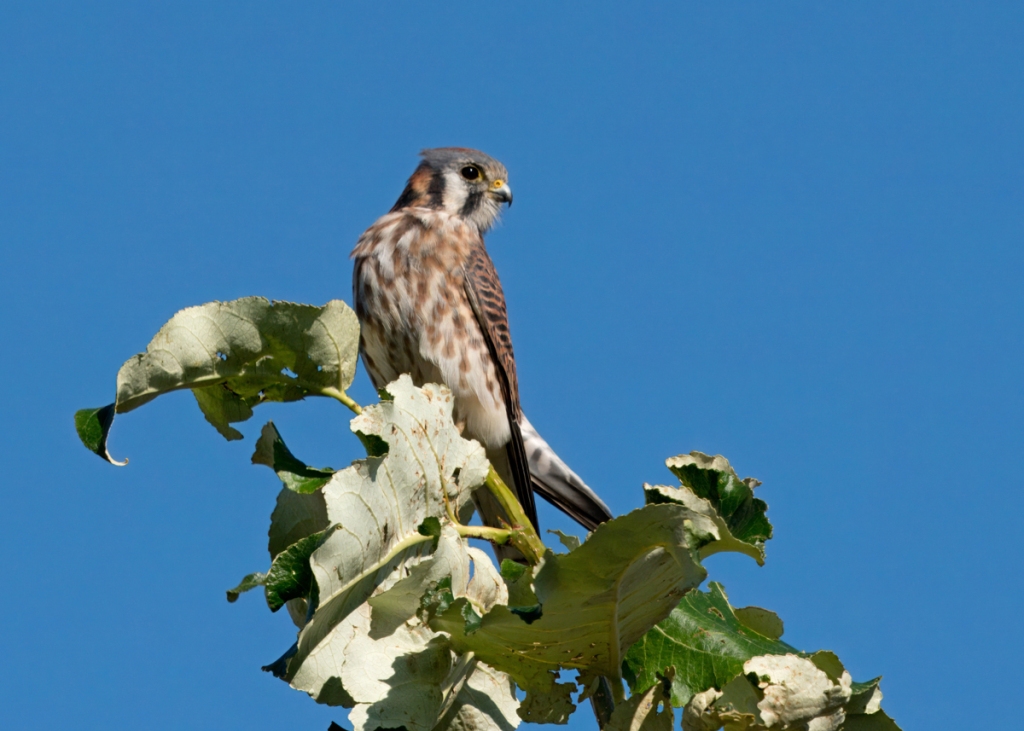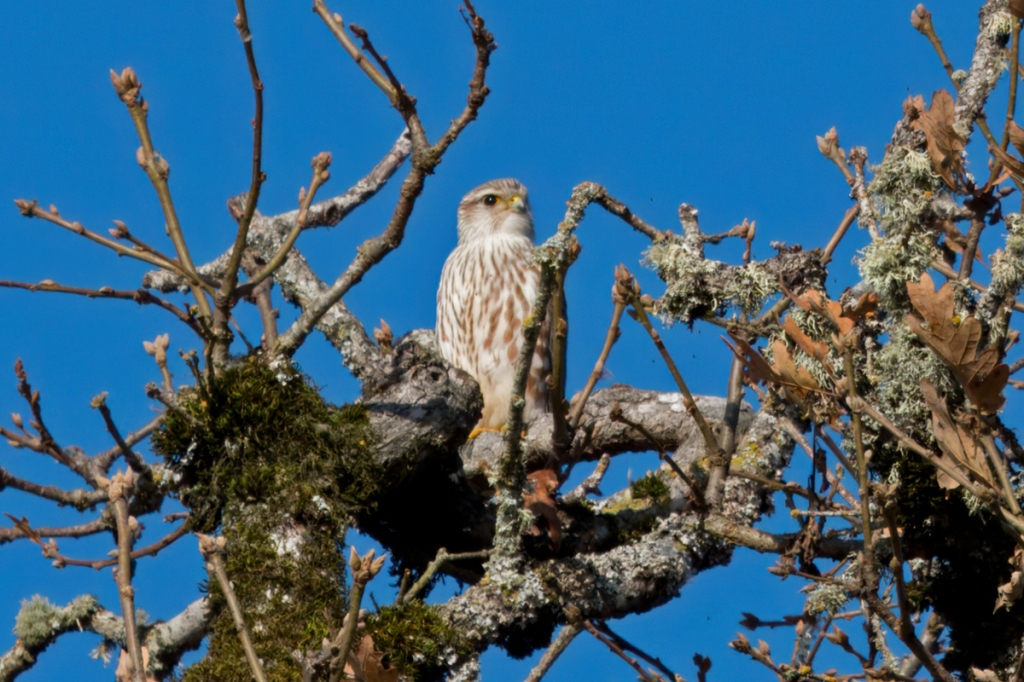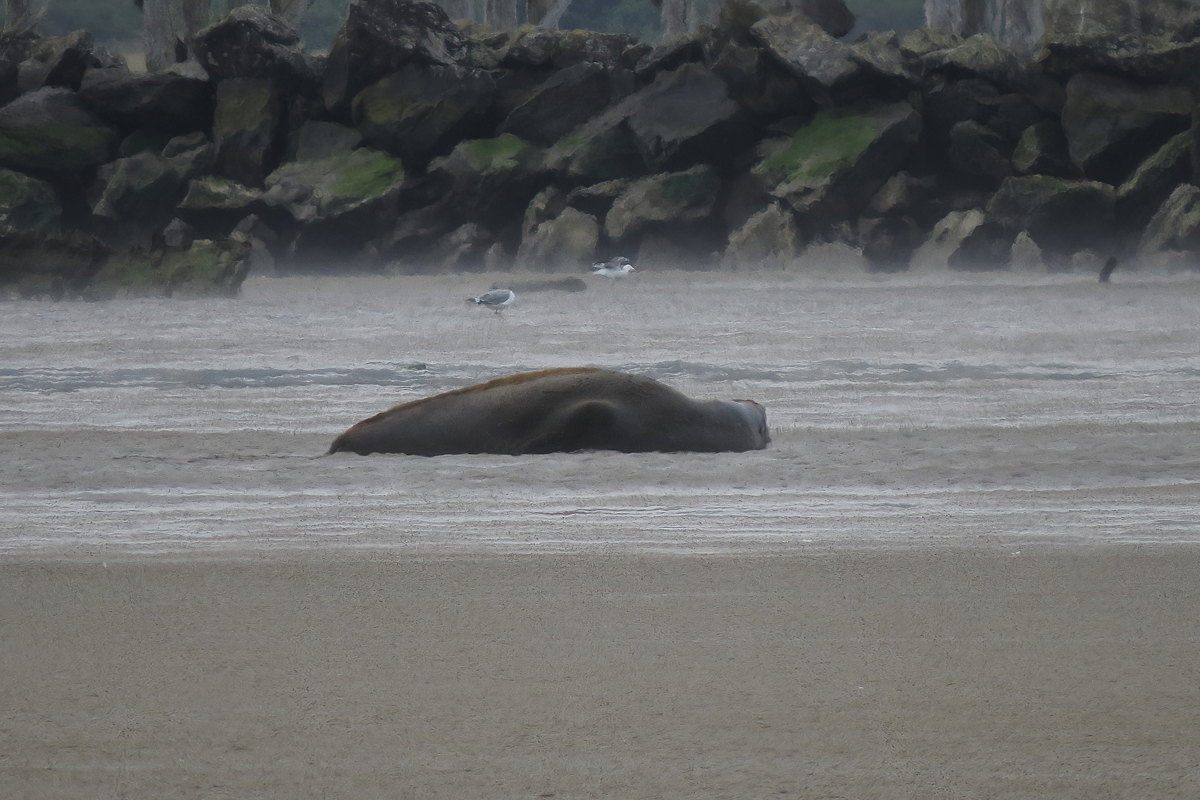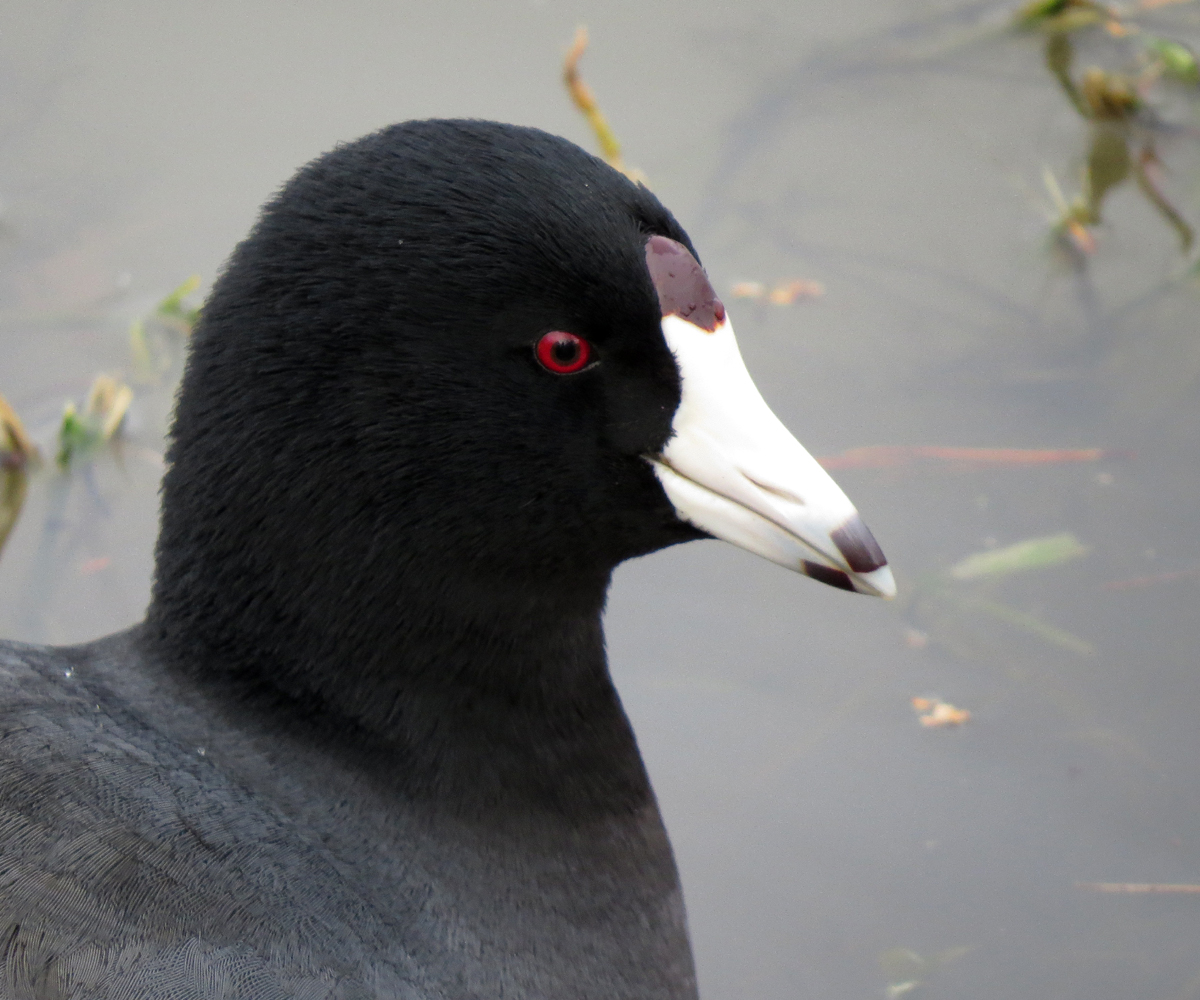Trees may get all the credit for creating pretty colors in autumn, but I think the birds do their part.










Happy autumn.

Trees may get all the credit for creating pretty colors in autumn, but I think the birds do their part.










Happy autumn.

Waterfowl numbers have been increasing in the Willamette Valley as the rains have begun. This male Northern Shoveler is still in his drab summer plumage.

This Emperor Goose is currently a local celebrity in the Beaverton area, hanging out with the local ducks and Cackling Geese.

This Gadwall was hanging out at Koll Center Wetlands. A brick building at the edge of the pond creates those brown reflections in the water, which complement the colors on this duck.

American Coot having a snack

Green-winged Teal at Fernhill Wetlands

Common Merganser at Fernhill
Numbers of ducks and geese should continue to increase into November.
Happy Autumn.
 Trestle Bay, just off Parking Lot D at Fort Stevens State Park, can be one of the more productive shorebird spots on the north coast. Timing is critical, as the bay fills completely with the high tide.
Trestle Bay, just off Parking Lot D at Fort Stevens State Park, can be one of the more productive shorebird spots on the north coast. Timing is critical, as the bay fills completely with the high tide.
 When the tide is out, the bay provides extensive mudflats. With this much exposed mud, the birds can be quite distant, so timing your visit when the tide is coming in can produce some nice viewing.
When the tide is out, the bay provides extensive mudflats. With this much exposed mud, the birds can be quite distant, so timing your visit when the tide is coming in can produce some nice viewing.
 On this visit we observed what we thought was a California Sea Lion carcass way out on the flat.
On this visit we observed what we thought was a California Sea Lion carcass way out on the flat.
 Later we noticed the the sea lion had rolled over and extended a flipper. Apparently he was just hanging out on the mudflat catching some sun.
Later we noticed the the sea lion had rolled over and extended a flipper. Apparently he was just hanging out on the mudflat catching some sun.
 I normally see these animals basking on rocks, but the mud was apparently working for this guy.
I normally see these animals basking on rocks, but the mud was apparently working for this guy.
 Southbound shorebird migration tends to come in waves, and we were between waves on this visit. Our consolation birds were this flock of Common Mergansers with a California Gull.
Southbound shorebird migration tends to come in waves, and we were between waves on this visit. Our consolation birds were this flock of Common Mergansers with a California Gull.
Happy last days of summer.
When time is limited or weather is sketchy, I appreciate having Commonwealth Lake close to home for a quick birding fix.
 Early in the morning, River Otters will often visit the lake to fill up on fish. There were three otters present on this visit, but they stayed out in the middle of the lake most of the time.
Early in the morning, River Otters will often visit the lake to fill up on fish. There were three otters present on this visit, but they stayed out in the middle of the lake most of the time.
 This Belted Kingfisher called from the tangled branches that overhang the water.
This Belted Kingfisher called from the tangled branches that overhang the water.
 Male Common Mergansers lent a splash of color with their red bills.
Male Common Mergansers lent a splash of color with their red bills.
 This female Hooded Merganser kept to the far shore.
This female Hooded Merganser kept to the far shore.
 Some of the dogwoods still had a few berries, and this Hermit Thrush was taking advantage of this seasonal food.
Some of the dogwoods still had a few berries, and this Hermit Thrush was taking advantage of this seasonal food.
 It was a treat to see this species sitting out in the open, rather than skulking in the undergrowth.
It was a treat to see this species sitting out in the open, rather than skulking in the undergrowth.
So nothing too exciting this trip, but it is enough to ward off insanity/crankiness until the next outing.
Happy Autumn
 A couple of Black-crowned Night-Herons has been hanging out at Koll Center Wetlands recently. This spot is strictly parking lot birding (pull up, get out of the car, and scan the pond), but it has attracted more than it’s share of interesting sightings – like Black-crowned Night-Herons.
A couple of Black-crowned Night-Herons has been hanging out at Koll Center Wetlands recently. This spot is strictly parking lot birding (pull up, get out of the car, and scan the pond), but it has attracted more than it’s share of interesting sightings – like Black-crowned Night-Herons.

 Other recent celebrities at this site include a group of up to six River Otters. These are such neat animals. It is a treat to find them in such an urban setting.
Other recent celebrities at this site include a group of up to six River Otters. These are such neat animals. It is a treat to find them in such an urban setting.


 Common Mergansers, like these two males, are some of the many species of waterfowl currently using the wetlands.
Common Mergansers, like these two males, are some of the many species of waterfowl currently using the wetlands.
 female Common Merganser
female Common Merganser
 Pied-billed Grebe
Pied-billed Grebe
 Nothing too rare or exotic, but we are lucky to have this little urban wetland to spice up an otherwise dreary autumn day.
Nothing too rare or exotic, but we are lucky to have this little urban wetland to spice up an otherwise dreary autumn day.
Commonwealth Lake Park is your typical urban duck pond nestled in the Portland suburb of Beaverton. Such parks are certainly not the places to go if you seek a wilderness experience, but they can be excellent places to study waterfowl up close. They also serve as a quick and easy birding fix when “life” prevents you from getting out in the field as much as you should.
 Species that are normally rather shy, like this Pied-billed Grebe, will often allow a close approach is parks such as this.
Species that are normally rather shy, like this Pied-billed Grebe, will often allow a close approach is parks such as this.
 American Coots, common and often dismissed by birders, are quite lovely when you get close enough.
American Coots, common and often dismissed by birders, are quite lovely when you get close enough.
 male Common Merganser, with what I think is a Yellow Bullhead
male Common Merganser, with what I think is a Yellow Bullhead
 Greater White-fronted Geese are common migrants over the Portland area, but uncommon winter residents. Four have been spending the winter at Commonwealth.
Greater White-fronted Geese are common migrants over the Portland area, but uncommon winter residents. Four have been spending the winter at Commonwealth.

 Since the remodeling of Portland’s Westmoreland Park a couple of years ago, there really hasn’t been a good spot to easily study gulls in the Portland area. This adult Ring-billed Gull was a cooperative model.
Since the remodeling of Portland’s Westmoreland Park a couple of years ago, there really hasn’t been a good spot to easily study gulls in the Portland area. This adult Ring-billed Gull was a cooperative model.
 This Ring-billed Gull is in his second plumage cycle.
This Ring-billed Gull is in his second plumage cycle.
So while I would much rather walk for several miles in a natural setting to find birds, I am grateful for little urban parks like Commonwealth.
Nala and I spent the morning at the Sandy River Delta east of Portland. Bird activity is definitely picking up, although many of the summer residents haven’t arrived yet.
 White-crowned Sparrows were singing
White-crowned Sparrows were singing
 Rufous Hummingbirds were zipping around everywhere. All the birds I could get a look at were males.
Rufous Hummingbirds were zipping around everywhere. All the birds I could get a look at were males.

 scratching an itch
scratching an itch
 Here is a typical view of a Common Yellowthroat.
Here is a typical view of a Common Yellowthroat.
 The recently reopened channel hosted a lot of birds, including this pair of Wood Ducks and a sleepy Mallard.
The recently reopened channel hosted a lot of birds, including this pair of Wood Ducks and a sleepy Mallard.
 Spotted Sandpiper, not yet spotted
Spotted Sandpiper, not yet spotted
 Common Merganser, proving once again that I have no idea how to control the white balance on my camera.
Common Merganser, proving once again that I have no idea how to control the white balance on my camera.
 Of course, Nala will tell you the main reason to visit this site is to go swimming. Here she is in the Sandy River, while the mastiff on shore waits to try to steal her ball.
Of course, Nala will tell you the main reason to visit this site is to go swimming. Here she is in the Sandy River, while the mastiff on shore waits to try to steal her ball.
I went out for a few hours on New Year’s Day to scout locations for my upcoming gull class. The weather was freakishly sunny for a January day in the Portland area.
 The only gull flock I found was at Amberglen office park in Hillsboro. Most were Ring-billed Gulls. Here is a first cycle Ring-billed with an adult. As you can see, I am totally incapable of getting a good photo of white birds in bright sunlight.
The only gull flock I found was at Amberglen office park in Hillsboro. Most were Ring-billed Gulls. Here is a first cycle Ring-billed with an adult. As you can see, I am totally incapable of getting a good photo of white birds in bright sunlight.
 These two Mew Gulls were looking very petite among the larger species.
These two Mew Gulls were looking very petite among the larger species.
 A couple of Hooded Mergansers were swimming near the fountain.
A couple of Hooded Mergansers were swimming near the fountain.
 Finally, a bird that doesn’t have a lot of white. This Mallard was looking gorgeous in the bright sun.
Finally, a bird that doesn’t have a lot of white. This Mallard was looking gorgeous in the bright sun.

Here are a few photos from recent ramblings.
 After delivering some books to Tualatin River NWR, I took a quick walk on the path that leads through some newly planted oaks and along the river. This male American Kestrel had just captured a shrew.
After delivering some books to Tualatin River NWR, I took a quick walk on the path that leads through some newly planted oaks and along the river. This male American Kestrel had just captured a shrew.
 These Western Canada Geese (and the Common Merganser on the log in the foreground) were napping at the Sandy River Delta.
These Western Canada Geese (and the Common Merganser on the log in the foreground) were napping at the Sandy River Delta.
 The Beavers are really enjoying the young trees at Sandy River Delta.
The Beavers are really enjoying the young trees at Sandy River Delta.
 This old American Robin nest was tucked into a crevice of a tree.
This old American Robin nest was tucked into a crevice of a tree.
 Pileated Woodpeckers are fairly easy to find at Sandy River Delta. This one was perfectly hidden behind a branch.
Pileated Woodpeckers are fairly easy to find at Sandy River Delta. This one was perfectly hidden behind a branch.
 Peregrine Falcon, Sandy River Delta
Peregrine Falcon, Sandy River Delta
 This Hermit Thrush was chasing another outside my bedroom window early in the morning.
This Hermit Thrush was chasing another outside my bedroom window early in the morning.
 Fernhill Wetlands, south of Forest Grove, is a great place to see the onset of autumn. Water levels on the main lake are still very low, but the recent rains will soon change that.
Fernhill Wetlands, south of Forest Grove, is a great place to see the onset of autumn. Water levels on the main lake are still very low, but the recent rains will soon change that.
 Migrant shorebirds, like these Western Sandpipers, are enjoying the mudflats. Shorebird numbers are starting to thin out.
Migrant shorebirds, like these Western Sandpipers, are enjoying the mudflats. Shorebird numbers are starting to thin out.
 This Pectoral Sandpiper was checking out the new vegetation on the lake bed.
This Pectoral Sandpiper was checking out the new vegetation on the lake bed.

 The first Cackling Geese have arrived. They will soon be joined by a few thousand more.
The first Cackling Geese have arrived. They will soon be joined by a few thousand more.
 This Common Merganser was resting on an exposed mud bar. I don’t get to see mergansers out of the water very often.
This Common Merganser was resting on an exposed mud bar. I don’t get to see mergansers out of the water very often.
 American White Pelicans, once considered rare in the Willamette Valley, are now an expected species in late summer.
American White Pelicans, once considered rare in the Willamette Valley, are now an expected species in late summer.
 Eurasian Collared-Doves are another species that are increasingly common in the area.
Eurasian Collared-Doves are another species that are increasingly common in the area.

The annual Fernhill Wetlands Birds and Brew Festival will be held on October 12. I will be leading the 8:00 tour for that. Here is a link for more info.